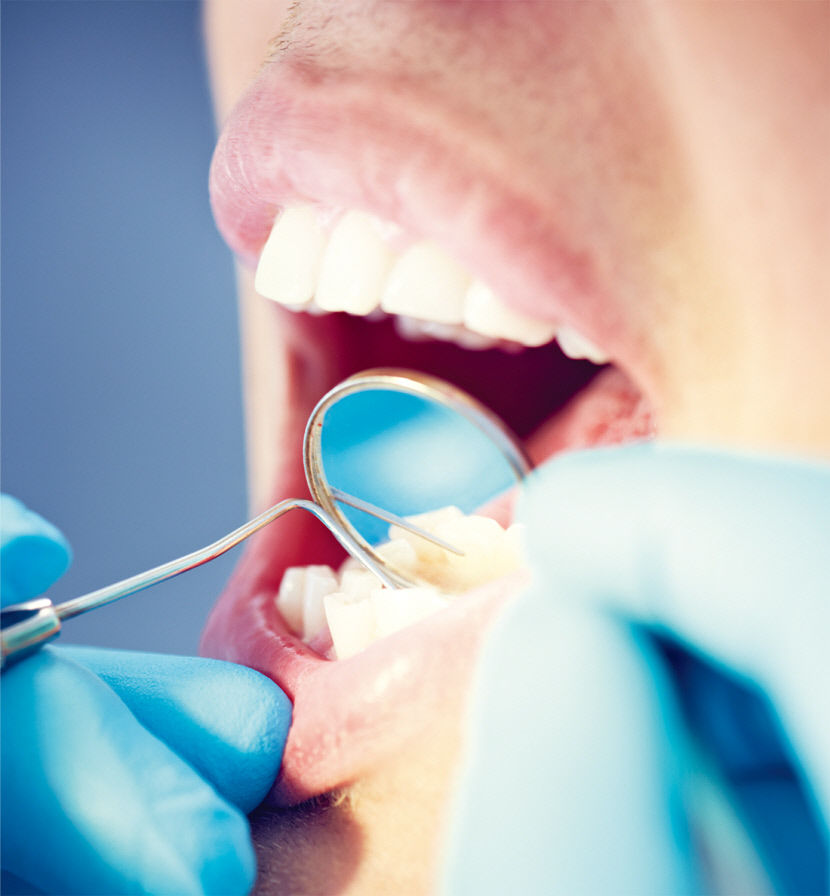From July 1, 2013, it was possible to remove tartar with a salary once a year. According to the health insurance review and evaluation agency’s medical cost statistics, there are 17.41 million people with periodontal disease in 2021. The total cost of medical care benefit recorded 1.78 billion won. Excluding corona-related treatment until the first half of 2022, the diseases with the largest number of outpatients are gingivitis and periodontal disease.
Periodontal disease twice as common as a cold
If tartar and plaque in the mouth are not removed, it causes an inflammatory reaction along with bacteria in the mouth, resulting in gingivitis. If left untreated, it can progress to periodontitis. In the gingivitis stage, the gums appear red and occasionally bleed. If gingivitis is left untreated, it progresses to periodontitis, and inflammation extends to the apical direction or adjacent teeth, and the gums may swell or pus may come out. In severe cases, the alveolar bone that supports the teeth is lost, causing the teeth to loosen or fall out. Bacteria that cause inflammation in the oral cavity can also affect systemic diseases through the bloodstream, so special attention is needed.
◆Treatment and prevention
Simple gingivitis can be improved by removing tartar (scaling) and paying attention to oral hygiene including brushing. If periodontitis has progressed, it is necessary to receive procedures and surgery to treat gum inflammation, such as subgingival curettage or periodontal valve surgery, and regular dental checkups and maintenance. Periodontal disease has no subjective symptoms until it progresses to a certain extent, so by the time you feel uncomfortable and visit a hospital, inflammation has already progressed considerably. It is important to control inflammation at an early stage through regular oral examinations, and to remove tartar and manage oral hygiene through periodic scaling. In general, oral hygiene management that can be done at home is to suppress plaque deposition and bacterial growth through careful brushing after meals or before going to bed, and using dental floss, interdental brushes, and water picks.
My teeth are cold after scaling
When removing tartar on retracted gums
There may be temporary numbness
Will my teeth get colder after scaling?
The outermost part of the tooth is covered with a hard material called enamel, while the inner part is made of a relatively soft material called dentin. There are fine tubes called dentinal tubules in dentin. When dentinal tubules are exposed to the oral cavity due to gingival recession or tooth abrasion, cold or hot stimulation, mechanical stimulation, or osmotic pressure cause symptoms of coldness. If you remove tartar covering worn teeth or retracted gingiva through scaling, you can feel more cold symptoms. Because of this, if tartar is not removed, it is like wearing dirty clothes that have not been washed for several years to avoid the cold and neglecting themselves at the risk of bacterial infection and disease. Most of the cold symptoms are temporary, but if the discomfort persists, the symptoms can be alleviated through hypersensitivity treatment, so it is good to consult a dentist.
Do you shave your teeth while removing tartar?
Removal using fine ultrasonic vibrations
No wear and tear on teeth
Can teeth be damaged by scaling?
An instrument called a scaler used in dentistry works on the principle of dropping tartar using fine ultrasonic vibrations and is not an instrument with cutting power. So teeth cannot be ground or trimmed. Occasionally, people complain that they have gaps between their teeth after scaling. Most of the time, tartar fills the space between the teeth exposed between the retracted gums, and then the tartar is removed and the space is exposed again, accompanied by cold symptoms, so you can feel that way.
My teeth are shaking after being scaled
Minor agitation recovery within a week
When periodontitis progresses, additional treatment is required
Can teeth loosen and gums get worse?
If you haven’t been scaling for a long time or if periodontitis has progressed, your teeth may feel more shaken after scaling. This is because tartar, which physically serves as a support by filling in between teeth, disappears. If there is tooth movement after scaling in the stage where alveolar bone loss is not accompanied, most of them can be recovered within about a week. However, if the gingivitis stage has progressed to periodontitis, additional periodontal treatment may be required.
Can tartar be left behind if tartar is removed carelessly?
In general, the most common site for tartar is the lingual side of the mandibular anterior teeth. There is a sublingual gland (sublingual gland), one of the three major salivary glands that secrete saliva, along with the submandibular gland and the parotid gland. easy. In particular, people with highly viscous saliva may accumulate tartar again within a month after scaling, so they must brush their teeth thoroughly so that the toothbrush can reach the tooth surface without missing anything.
Reporter Kang Seung-gyu [email protected]
▨Help = Choi Seong-min, Director of Health Promoting Dental Clinic, Seoul Eastern Branch of Korea Health Care Association (Doctor of Periodontics, Kyungpook National University), Gyeongbuk Branch of Korea Health Care Association (Daegu Buk-gu Health Examination Center)
2023-06-05 15:00:00
#Tartar #sticks #clean #well.. #Scaling #saves #gums


